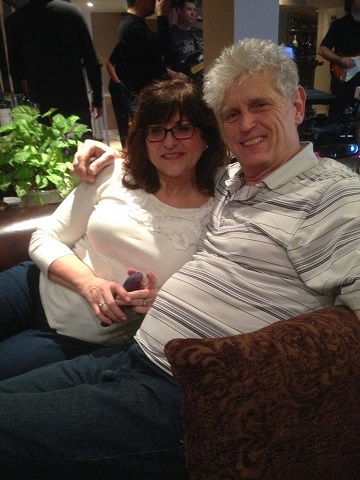
Three years ago today, my sister-in-law snapped this picture of my husband and me. Despite having been through a very difficult two weeks, I looked perfectly healthy. But this could have been the last photo ever taken of me. Three hours later, I would have have a heart attack commonly called the Widowmaker, given that name because 90% of people who have it don’t survive.
When this picture was taken, I had no pain, but was already sweating profusely. I was clammy. Two hours later, I had what I thought was heartburn. I took antacids but it only grew worse. Lying down to sleep made it worse. I got up, still thinking it was heartburn, and ate a few crackers. I tried sleeping again but by then the pain in my chest was like a vise. I asked my husband to call an ambulance.
They arrived within minutes. By that time, I was feeling pain in my left shoulder, jaw, and arm, but my back was also in spasm, and I was sure that it was the main source of my problem. When the paramedics arrived, I was writhing in back pain and they began trying to work out the knot. It was only while in the ambulance that they suspected I was having a heart attack. And of course tests at the hospital confirmed that.
Three days later, I was stabilized and they performed an angiogram to check for blockages. Later, the nurses told me that they almost took bets among themselves as to whether or not I would need a stent. The doctor doing the procedure thought not. He was mistaken.
My LAD, the artery feeding two-thirds of my heart, was 95% blocked. I looked perfectly healthy and up to the week before, I had no idea that a problem existed. Neither did my GP.
LADIES, NEVER ASSUME THAT YOUR SYMPTOMS ARE INSIGNIFICANT, especially if they’re coming at the end of a particularly stressful period in your life.
(Women’s symptoms are often atypical. Some only experience fatigue (a month earlier, I’d nearly passed out while driving on the highway after a particularly stressful day at the hospital). Sometimes, women only experience discomfort in their back, usually between their shoulder blades).